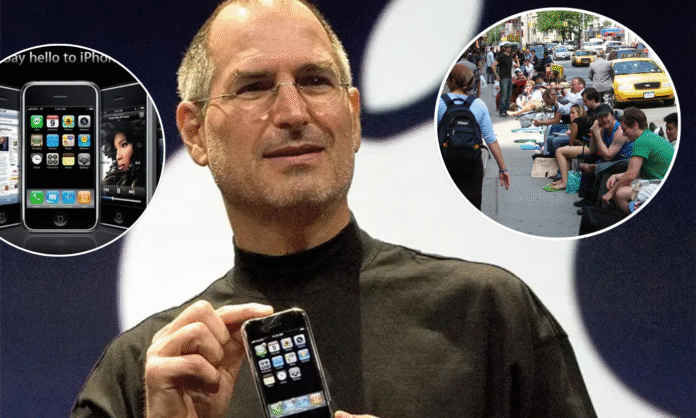Long lines stretched around the block. People waited for hours, some even camping out overnight on the sidewalk. Inside Apple stores across America, workers got ready for what would become the most significant product launch in history. It was 29 June 2007, and Americans were about to meet the iPhone for the first time.
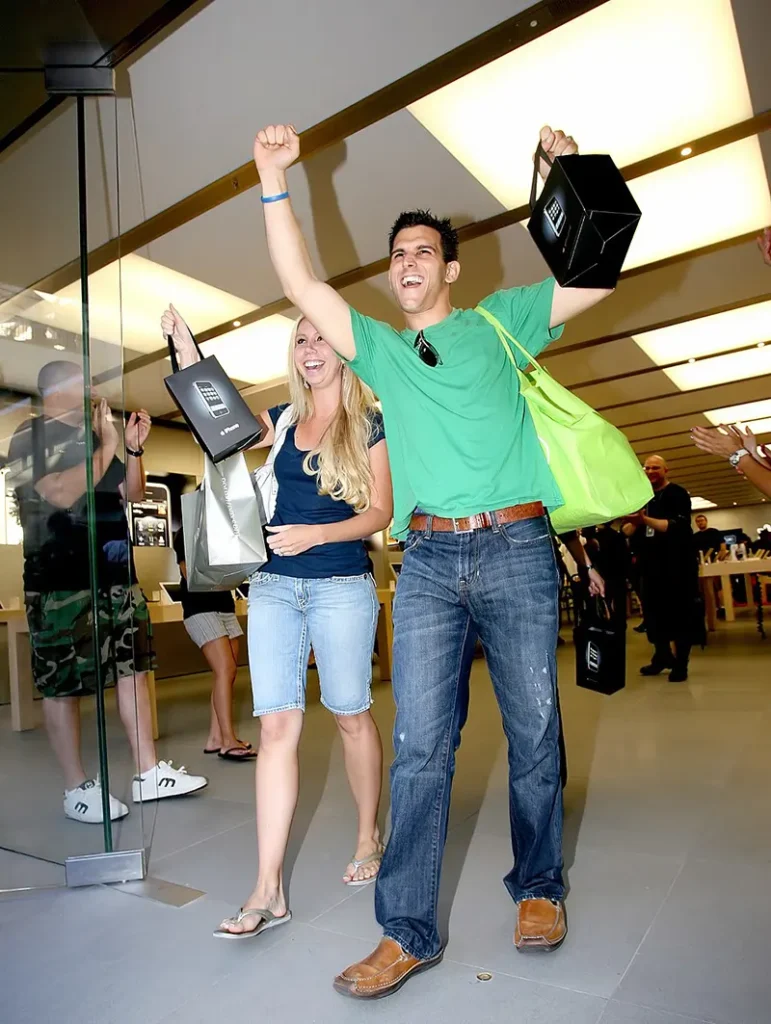
What those customers didn’t know was that their new phone had been three years in the making. Apple had kept it completely secret under the code name “Project Purple.” Nearly 1,000 Apple workers had been working on this top-secret project, and they couldn’t tell anyone – not even their families.
The story began in 2004 when Steve Jobs assembled his top team. Tony Fadell, who created the iPod, handled the hardware. Scott Forstall worked on the software. Jony Ive designed how it would look. Together, they spent $150 million over two and a half years to build something that had never existed before.
At first, Apple was trying to make a tablet computer – something like the iPad that came out years later. But Jobs had a different idea. He wanted something smaller that people could carry in their pocket and use to connect to the internet anywhere.
CEO Steve Jobs stands on stage at San Francisco’s Macworld event on 9 January 2007, giving what many people call the most outstanding tech presentation ever, as he shows off the device that would change everything.
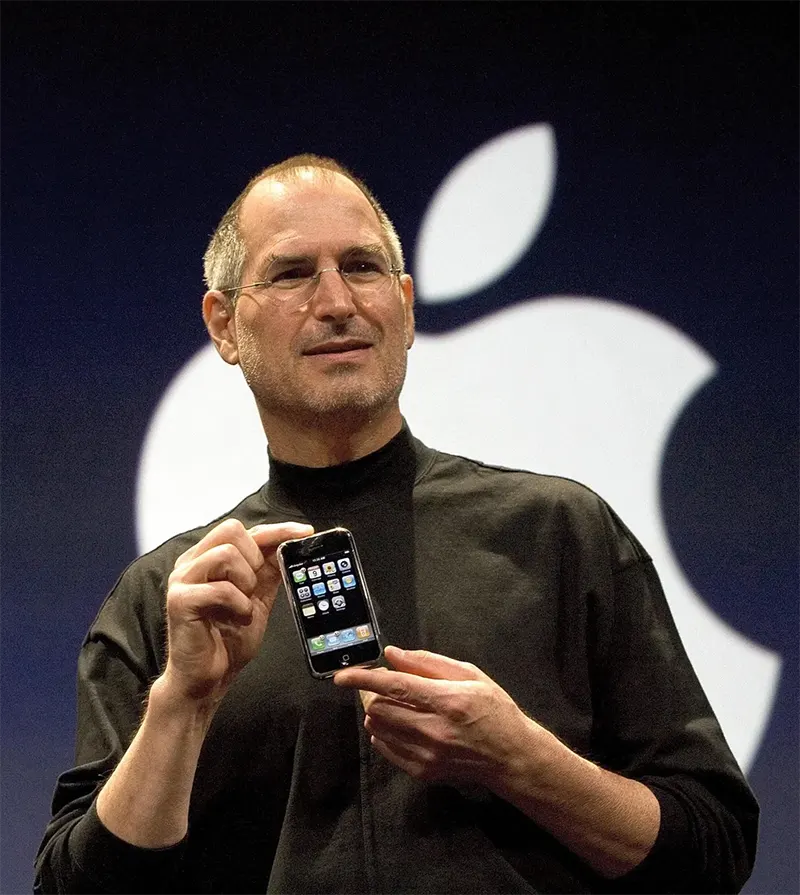
The breakthrough came from an older Apple product that had failed – the Newton MessagePad from the 1990s. That device had a touchscreen, but the technology wasn’t good enough back then. By 2007, everything had improved. Batteries lasted longer. Computer chips were faster. Cell phone networks could handle internet data.
But it was Jony Ive’s design that made the iPhone special. He removed all the extra buttons and made the screen the main feature. The phone would work almost entirely by touching the screen – something completely new for phones at that time.
Apple made a deal with Cingular Wireless (which later became AT&T). This partnership gave iPhone users access to the cell network, but it also meant AT&T’s computers would crash when too many people tried to activate their phones at once.
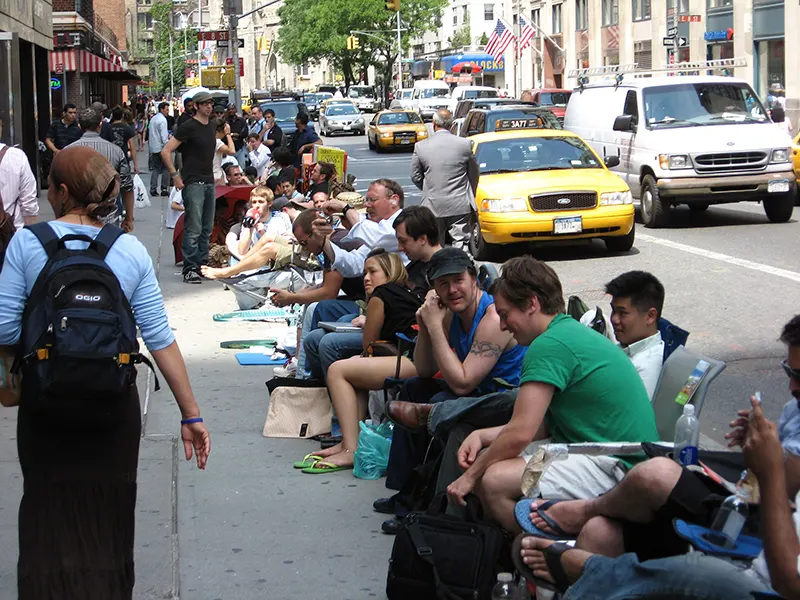
On 9 January 2007, Jobs walked onto the stage at San Francisco’s Macworld convention. Wearing his usual black shirt and jeans, he started with his typical dramatic style: “Today, Apple is going to reinvent the phone.”
The crowd went wild as Jobs revealed his master plan. This wasn’t just a phone – it was three things in one: a wide-screen iPod with touch controls, a revolutionary phone, and a breakthrough internet device. “Do you get it?” he asked the amazed audience. “These aren’t three separate devices. This is one device, and we’re calling it iPhone.”
The demonstration was perfect. Jobs swiped through photos, scrolled through contacts, and browsed websites – all just by touching the screen with his finger. The multi-touch screen allows users to pinch to zoom in and out, swipe to scroll, and tap to select items.
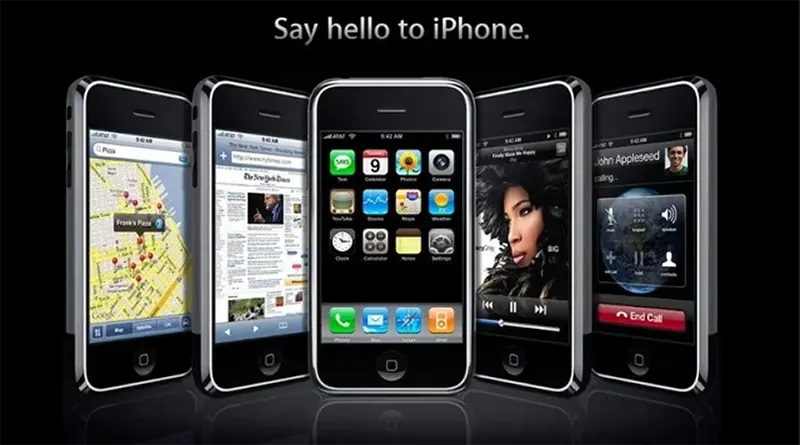
The iPhone went on sale five months later on 29 June 2007. Apple stores across America closed at 2 p.m. that day and reopened at 6 p.m. to crowds of excited customers. The price was high – $499 for the 4GB model and $599 for the 8GB version – but people wanted it anyway.
AT&T’s activation system crashed due to an overwhelming number of people trying to set up their phones simultaneously. Many early buyers found themselves holding expensive devices they couldn’t actually use for hours. But people were still incredibly excited.
The sales numbers were incredible. Experts estimated that between 250,000 and 700,000 iPhones were sold during just the first weekend. AT&T later said that 146,000 iPhones had been successfully activated by the end of that opening weekend – an incredible number considering all the technical problems.
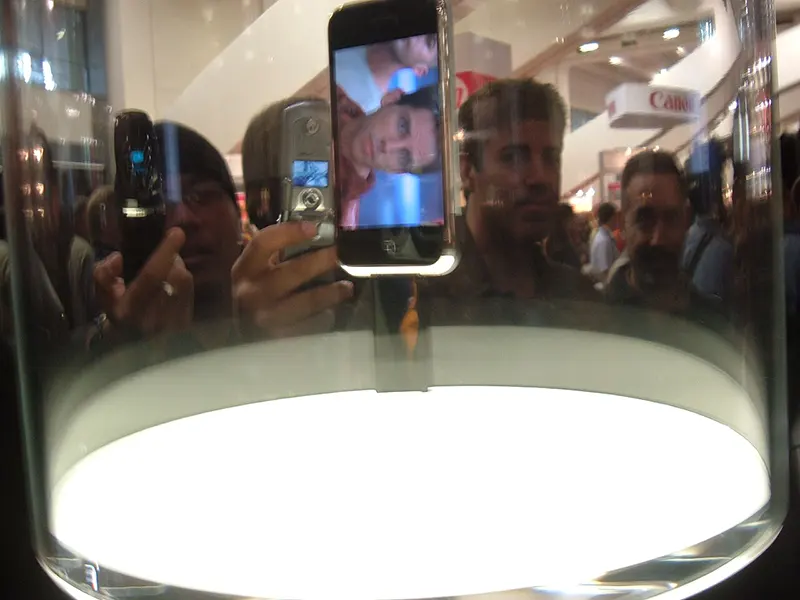
The excitement didn’t last for everyone. Just two months later, on 5 September, Apple made a shocking announcement: they stopped selling the 4GB model and cut the price of the 8GB version by $200. Customers who had paid full price felt cheated. The backlash was so bad that Apple eventually gave $100 store credits to unhappy buyers.
Even with this controversy, the iPhone’s impact was massive and immediate. That summer, Apple announced that other companies could create apps for the iPhone using web technology – this was the beginning of what would become the App Store, which makes billions of dollars today.
The iPhone introduced features we now take for granted: visual voicemail, pinch-to-zoom, and a mobile version of Apple’s computer operating system designed just for touchscreens. It was the first phone that successfully used multi-touch technology that regular people could buy.
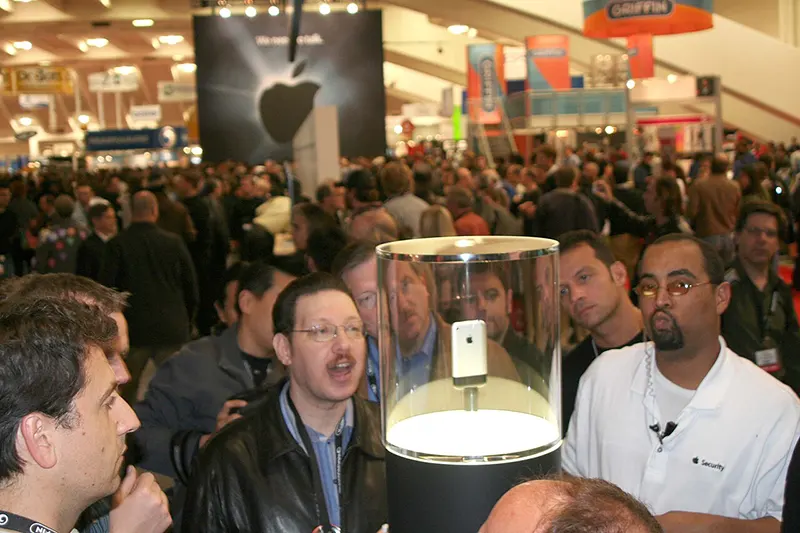
When we look back at those incredible photos from 2007, we can see just how important that moment really was. What started as Project Purple – a secret experiment in Apple’s labs – became a product that not only created a new type of phone but also completely changed how people live their lives.
The iPhone didn’t just make existing smartphones better – it made them all look old and outdated. BlackBerrys with their tiny keyboards suddenly seemed ancient. Palm Pilots became museum pieces overnight. Even Nokia, the world’s largest phone company at the time, couldn’t keep up with this new technology.
Today, almost 20 years later, the iPhone’s influence touches every part of modern American life. The gestures that Jobs showed that day – swiping, tapping, pinching – are now done billions of times every day by people all over the world. The App Store has paid over $300 billion to app developers, creating whole new industries and changing how Americans work, play, and talk to each other.
The excited faces in those 2007 photos show more than just people buying a new gadget – they captured the exact moment when the future arrived in America. What they held in their hands wasn’t just a phone, but a gateway to unlimited possibilities. Steve Jobs had achieved what he always wanted: making technology that wasn’t just useful, but truly personal.
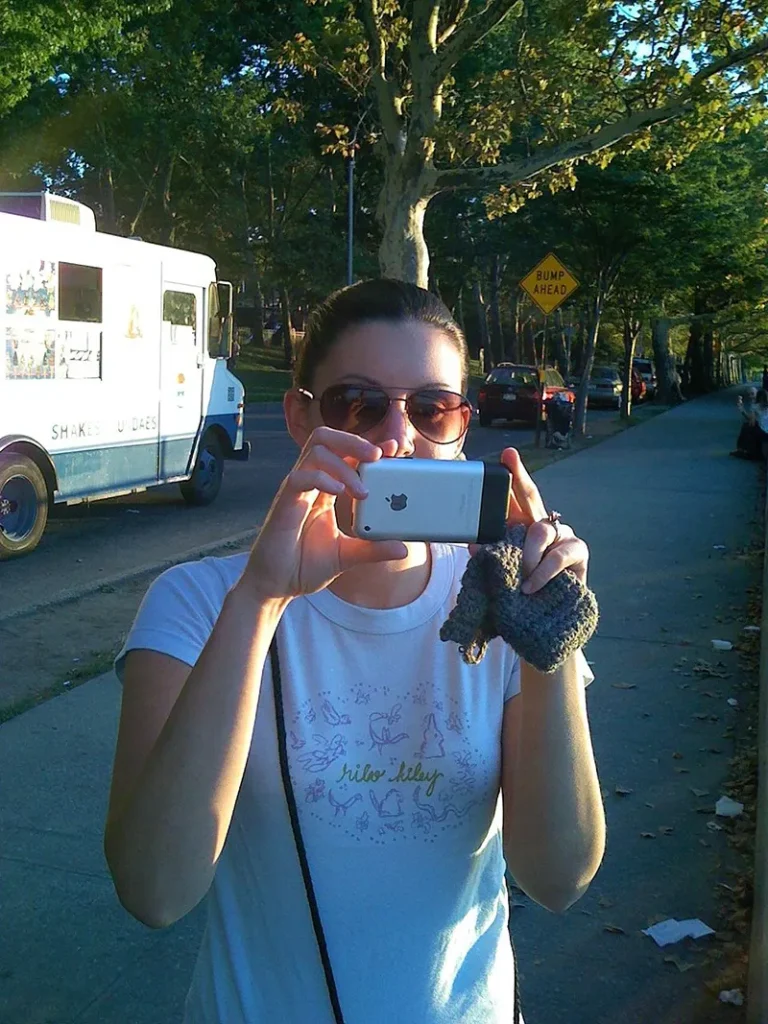
The revolution that began with Project Purple continues today. Each new iPhone pushes boundaries and shows us new things that are possible in our connected world. Those historic images remind us that sometimes the most significant changes start with something simple – just reaching out to touch a screen.
From that day forward, America – and the world – would never be the same. The iPhone didn’t just change phones; it changed everything.
(Photo credit: Wikimedia Commons/ Flickr / RHP / Business Insider).

